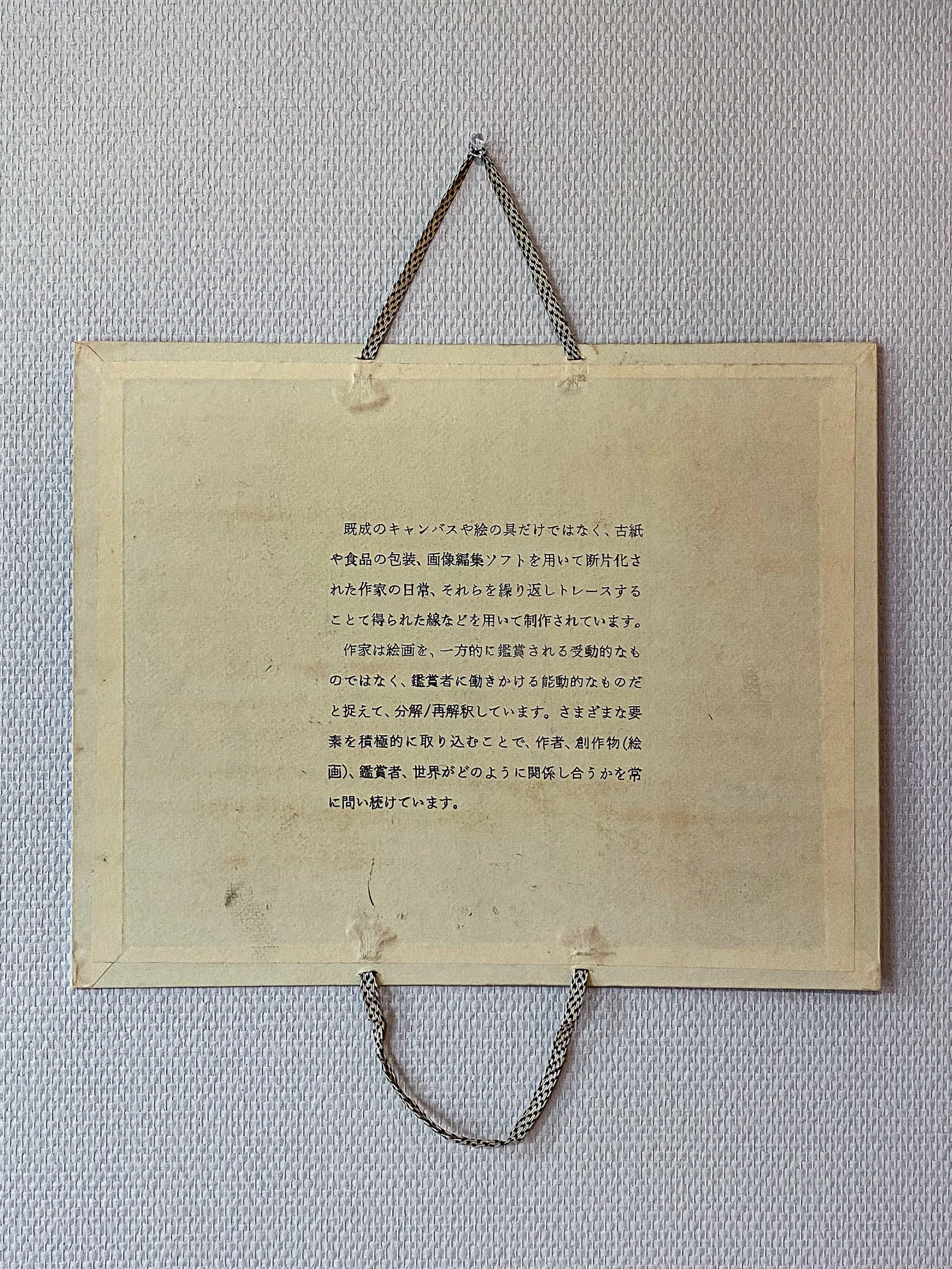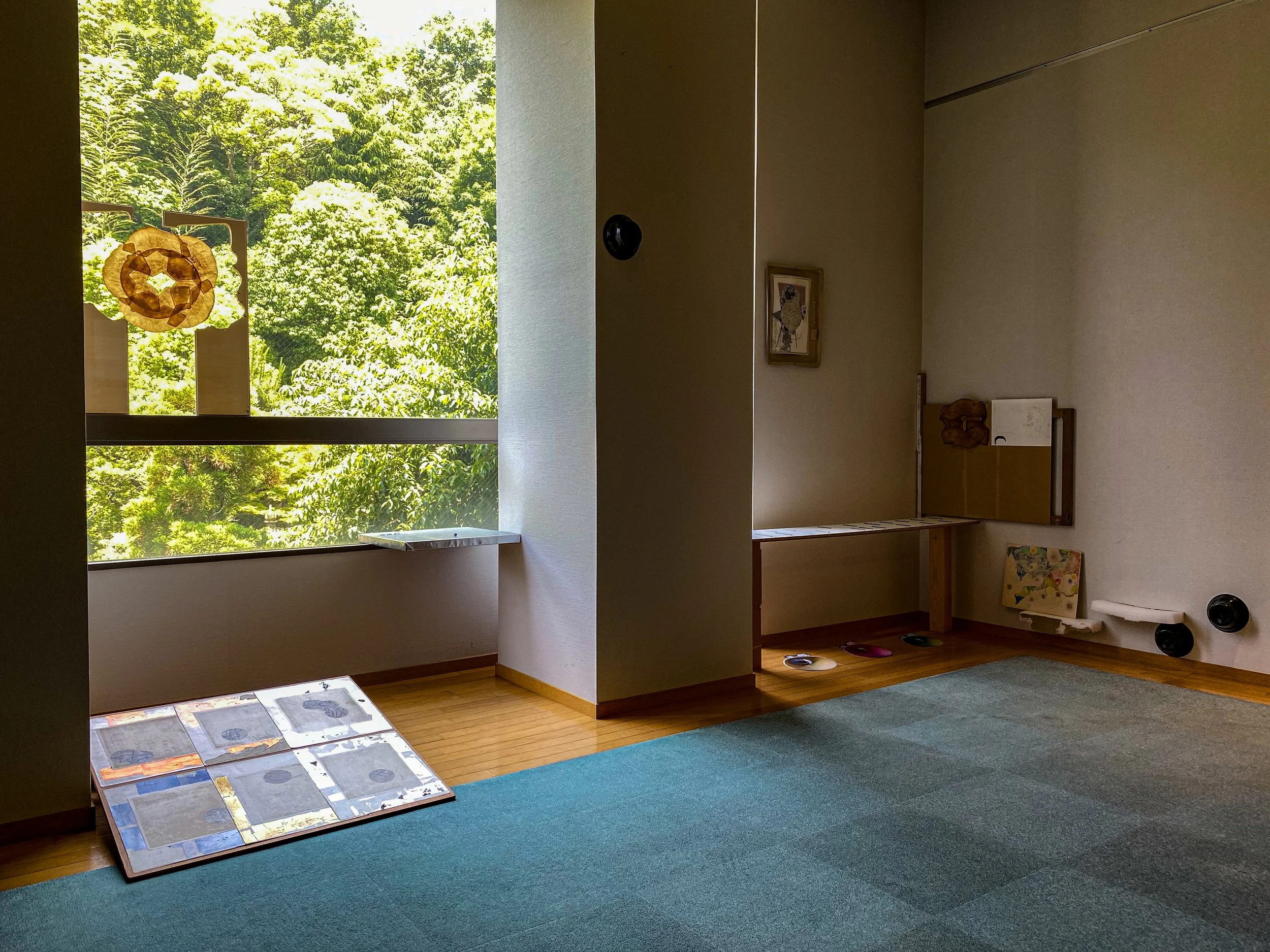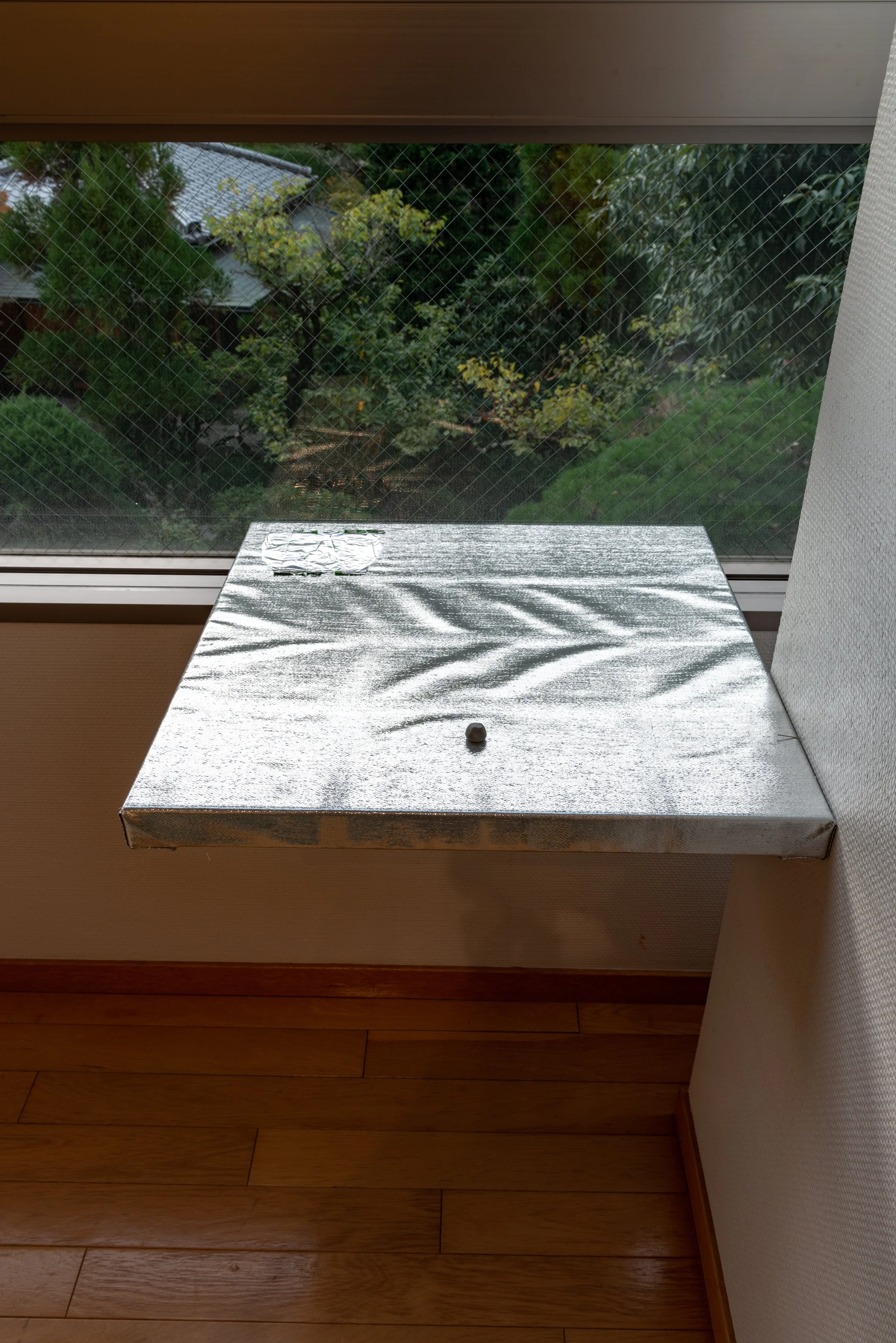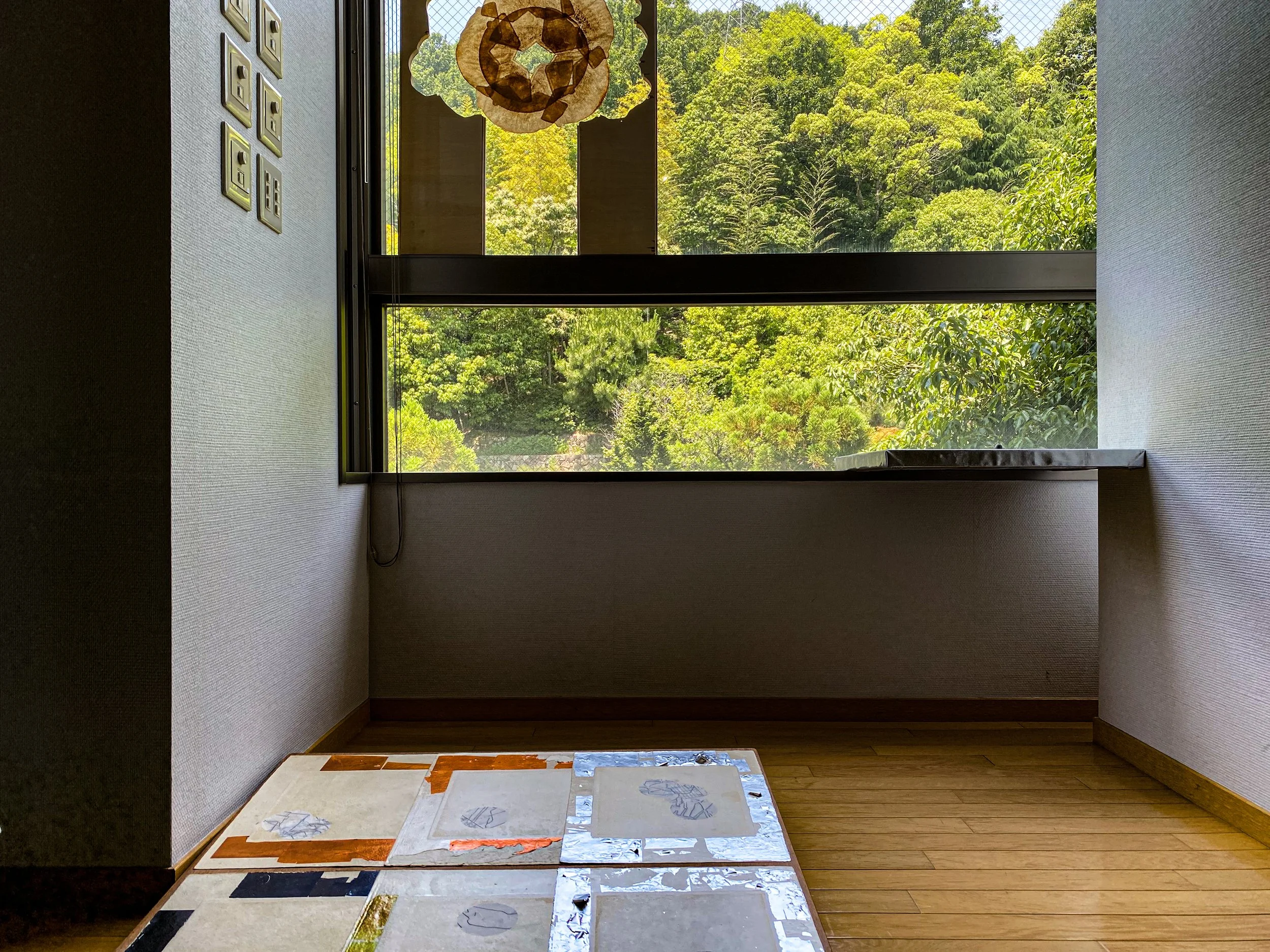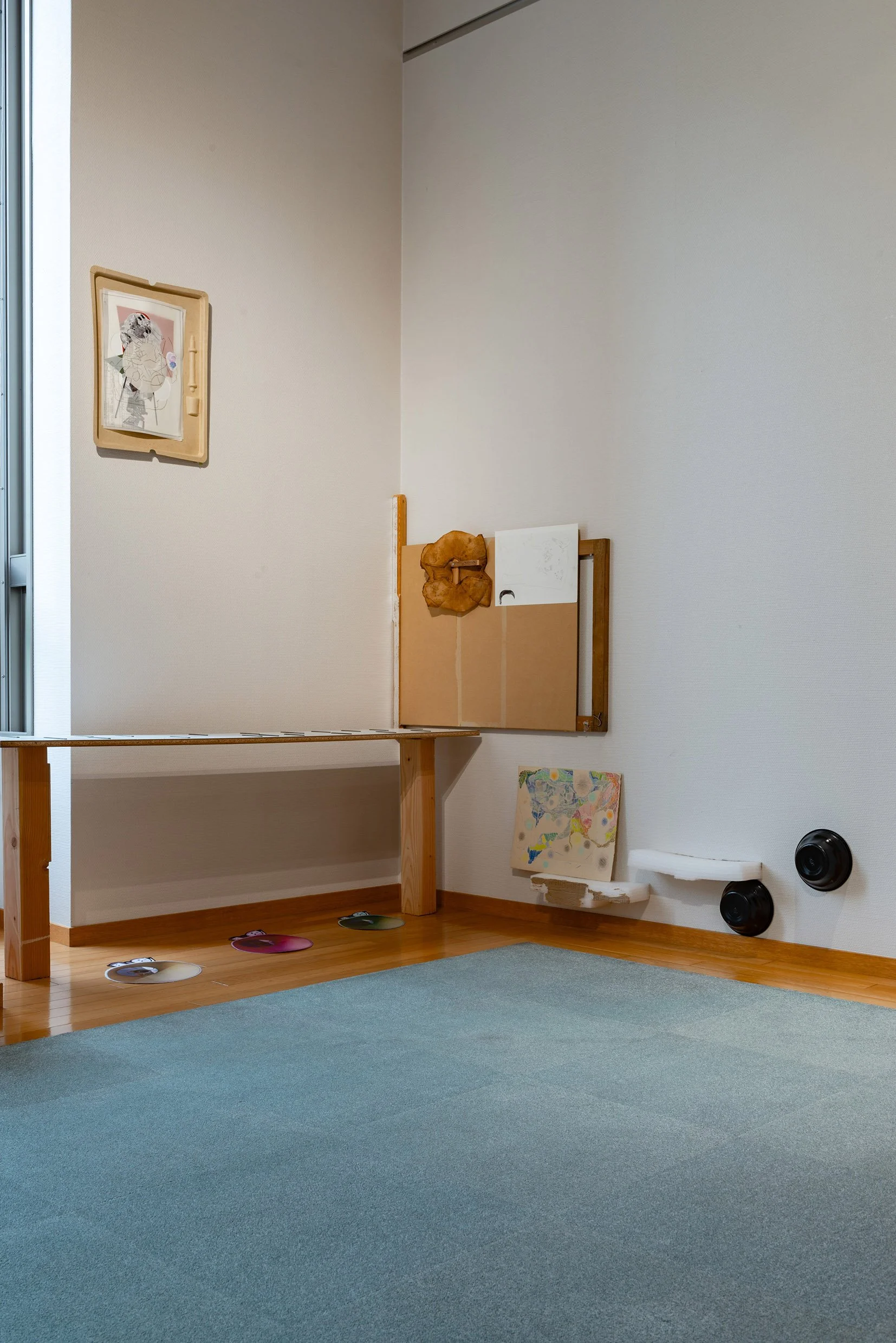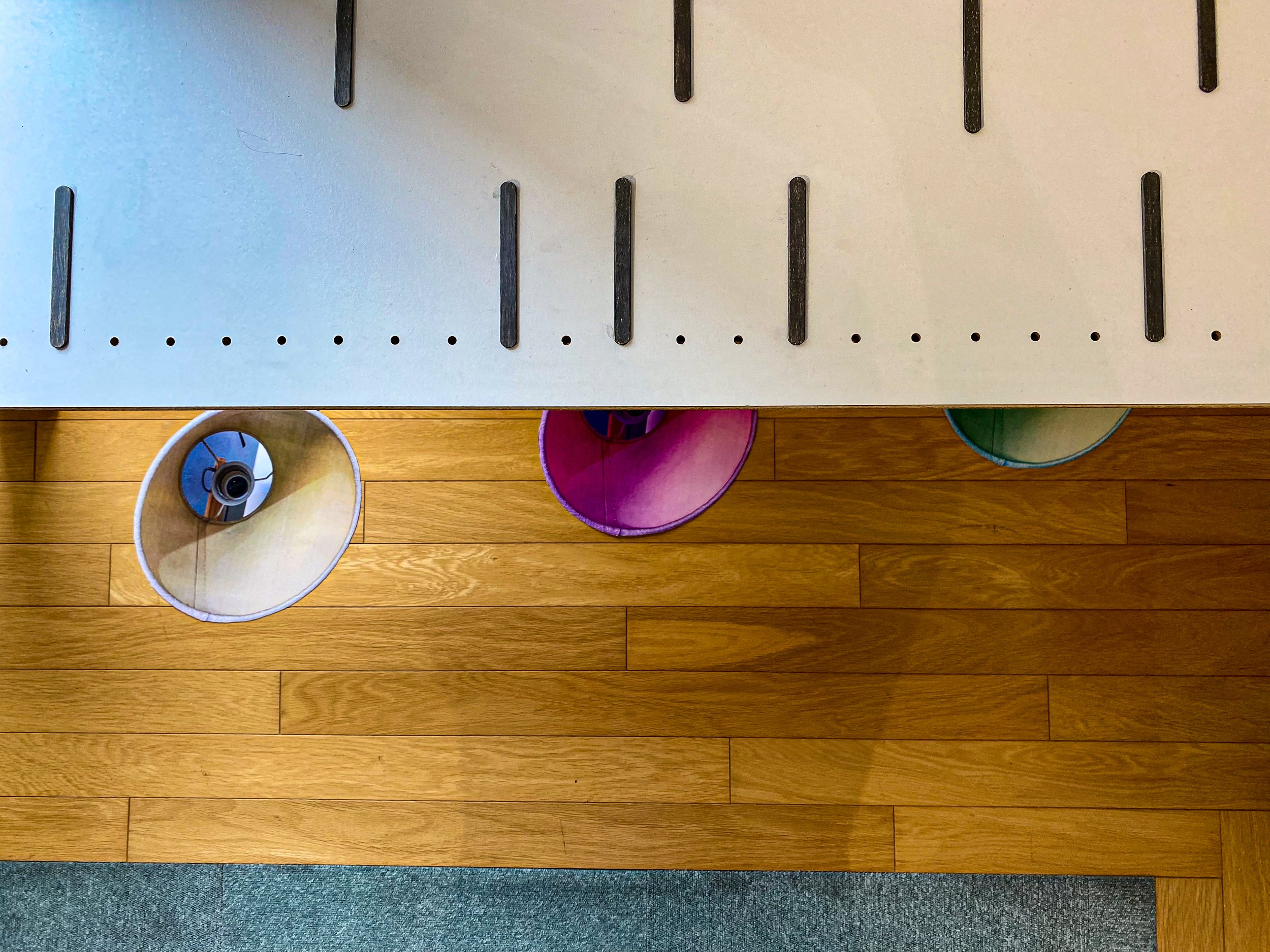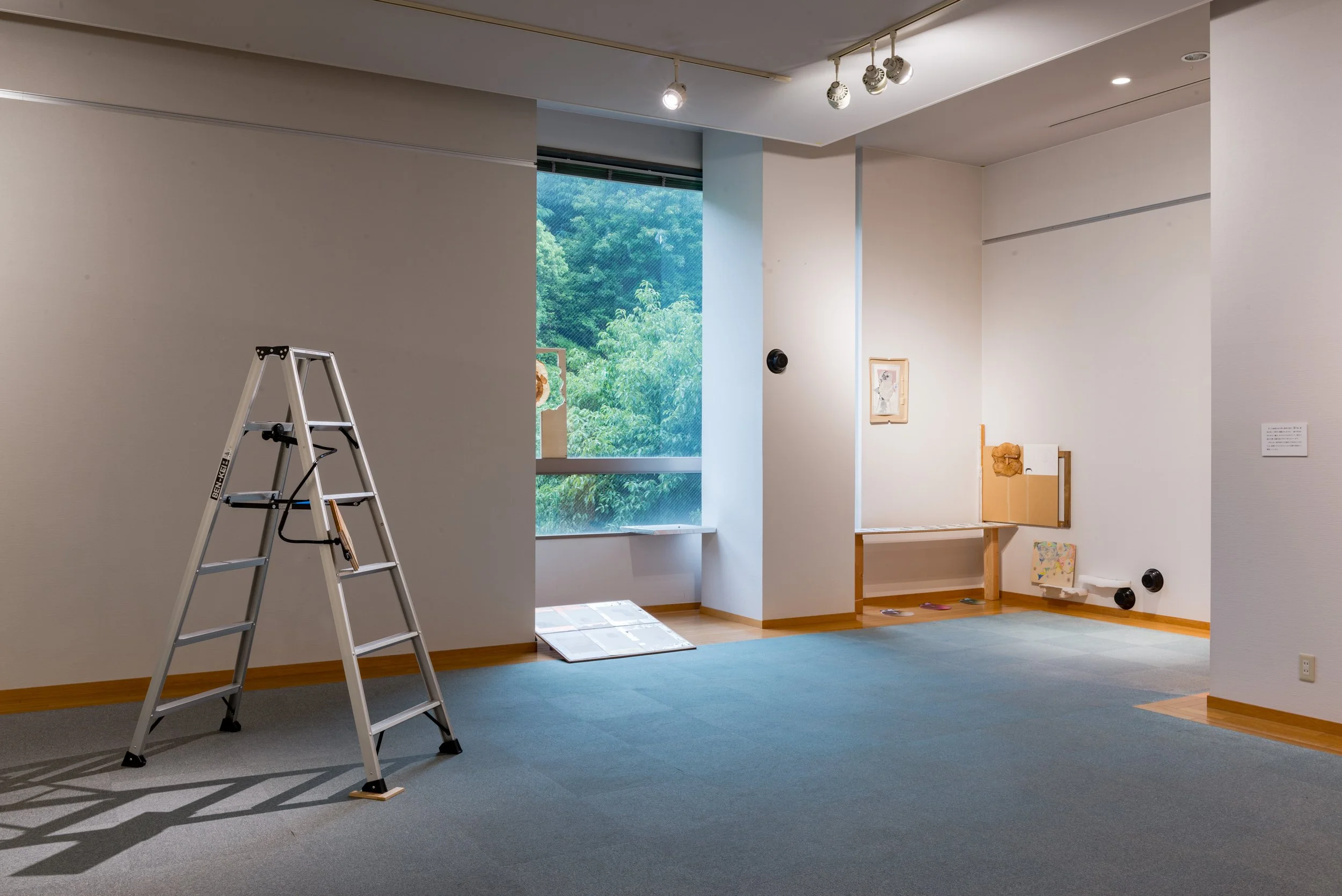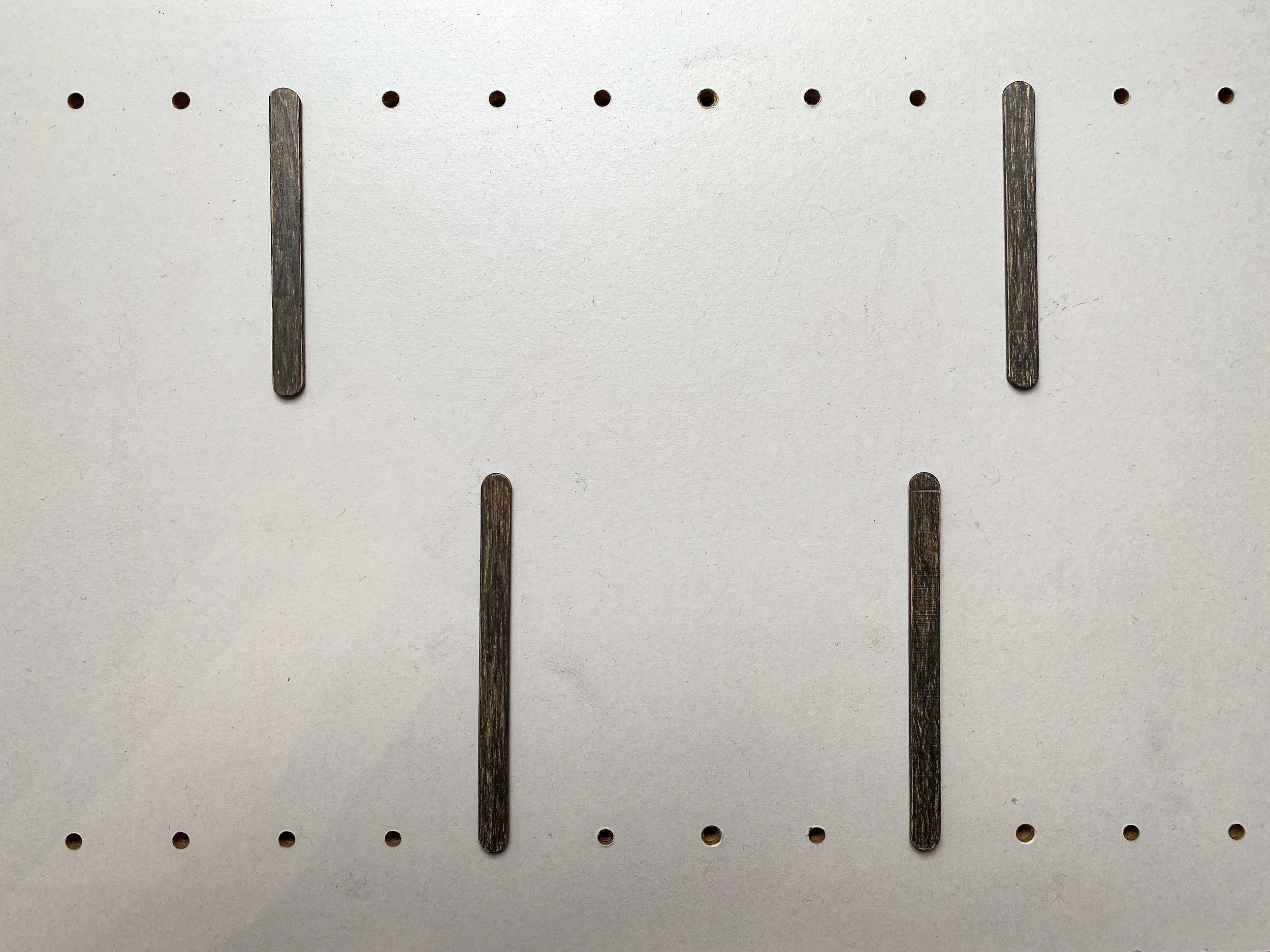Read & Wear (2021), site-sensitive installation, Nakata Museum, Onomichi
Materials:
A stepladder owned by Nakata Museum, Gooseneck phone holder, a digital montage printed on corner-trimmed wooden piece, a text transferred with carbon paper on an old mounting paper, coloured pencils on an old mounting paper, a plastic cup of buckwheat noodles eaten by the artist, a wooden stretcher, used cardboard, drawing and collage on A4 copy paper, used coffee filters, animal-skin glue, unwanted shelf board, graphite on ice-cream sticks eaten by three offspring of the artist, glue-coated packing material, old tracing paper used by the local shipbuilding company, printed digital montage, pencils, oil on paper palette, plastic packing material with pieces of damaged cardboard, printed and cut out digital photos, stretched silver fabric, crackers wrapper, unbaked sculpey, aluminium foil, silver leaf, corner-trimmed lumber core board
美術館に属する脚立、スマホ用自在アーム、加工された木材に印刷されたデジタル・モンタージュ、 古書に属する台紙にカーボン紙を用い転写されたキャプション、古書の図版のマウント紙に色鉛筆、食したそばのプラスティック・カップ、キャンバス用木枠、使用済み段ボール、A4コピー用紙にドローイング(鉛筆、デジタル・モンタージュの断片のコラージュ)、使用済みコーヒーフィルター、膠、 不要になった棚の横板, 3人の子供が食したアイスの棒にグラファイト, 膠引きしたペンタブレットの梱包材、造船会社に属していた古いトレーシングペーパー、印刷されたデジタル・モンタージュ、鉛筆、紙パレットに油彩、剥がし残しの段ボールの一部が張り付いたプラスティック梱包材、印刷され切り抜かれたデジタル・フォト、キャンバス木枠にシルバーの布、食したクラッカーの包装紙、生スカルピー、アルミ箔、銀箔、着色箔、加工されたランバーコア板材
Work Description
In this site-sensitive installation at Nakata Museum in Onomichi, Yutaka Inagawa assembled everyday remnants and personal artifacts stemming from his own consumption and daily life. These seemingly disparate objects – much like a random, flashback-like constellation of materials – were placed in a quiet corner of the gallery, activating the space in unexpected ways. The museum’s own stepladder and flexible-arm phone holder, along with used packaging and a plastic cup of soba noodles, served as humble foundational materials. Meanwhile, fragments of digital collages, drawings, and semi-abstract sculptural elements were arranged as enigmatic connectors that respond to shifts in the environment and time. Through his creative interventions, Inagawa blurs the boundary between artistic gestures and supportive fixtures, allowing these objects to function both as standalone works and as auxiliary structures.
By deliberately framing the window and a nearby pillar, Inagawa highlighted how the boundary between interior and exterior can fluidly transform. As time passed, light pouring through the window moved from sharp morning shadows to gentle afternoon rays, as well as to overcast and rainy conditions—infusing the space with constant dialogue among environment, materials, and viewers. Beyond the window lay greenery in perpetual flux, providing a backdrop that mirrored the fleeting interplay between the artist’s interventions and natural cycles.
Through this flexible conversation with light and space, Inagawa’s site-sensitive approach reveals how mundane residues of consumption, when clustered in a museum’s corner, can transform into a layered realm of contemplation. The resulting space resonates with the building’s architectural structure and the surrounding landscape, culminating in a deeper, more introspective experience.
尾道のなかた美術館で実施された本インスタレーションにおいて、稲川豊は、日常生活の消費活動から手元に残った素材や日用品、個人的な品々を、まるでランダムに組み合わされたフラッシュバックのような、非接続性を有する星座のように配置し、ギャラリー内の静寂な一角を活性化させた。美術館所蔵の脚立やフレキシブルアームのスマホホルダー、使用済みのパッケージ、そばのプラスチックカップなどの質素な素材に、デジタルコラージュ、ドローイング、そして半抽象的な彫刻的構造物が、場や時間の変化と対話しながら、謎めいたつながりを形成するピースとして巧妙に配置されている。これらのオブジェクトは、作品としての性質と備品としての機能が、稲川の干渉としての創作物という形であいまいに交錯し、芸術的なジェスチャーを示すと同時に補助的な構造物としても働いている。
インスタレーションでは、窓や柱を敢えてフレーミングする手法により、内外の境界が流動的に変容する様相が強調された。時の経過とともに窓から差し込む日差しが、朝の鋭い影から午後の穏やかな光、曇天や雨天へと展示空間を刻々と変化させ、その過程で環境、素材、鑑賞者との間に絶え間ない対話が生まれた。窓越しに見える外の緑は、刻々と表情を変え、稲川の干渉としての創作物と自然のサイクルとの儚い交錯を映し出す背景となった。
こうした柔軟な光と空間の対話を通じ、稲川のサイト・センシティブなアプローチは、稲川の手元に残った日常の消費の痕跡が、美術館の一角で多層的な思索空間へと変容する可能性を浮き彫りにしている。そして、その空間は建物の構造や外部の景観と調和し、より深い層をもつ内省的な体験へとつながっていく。

